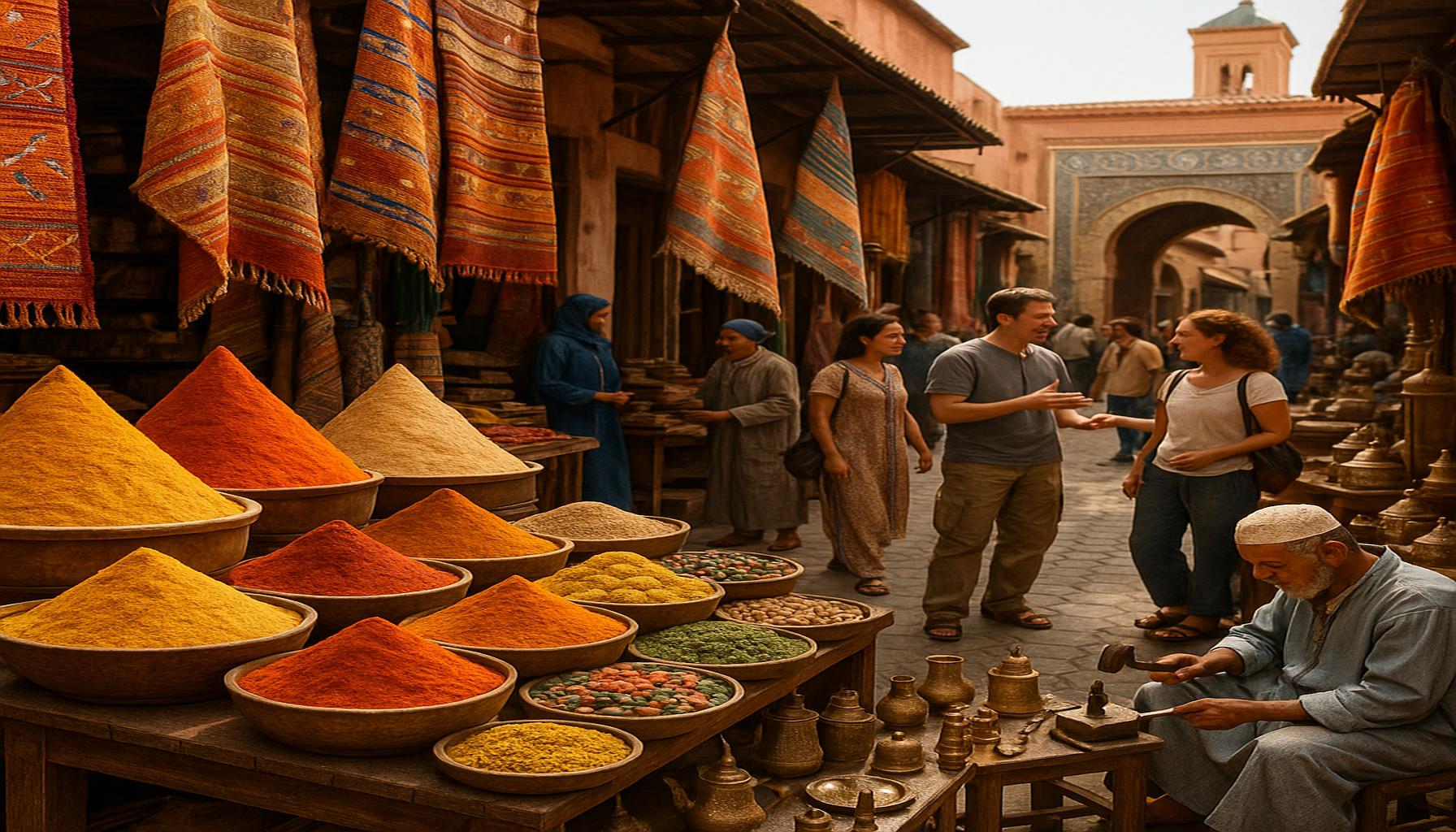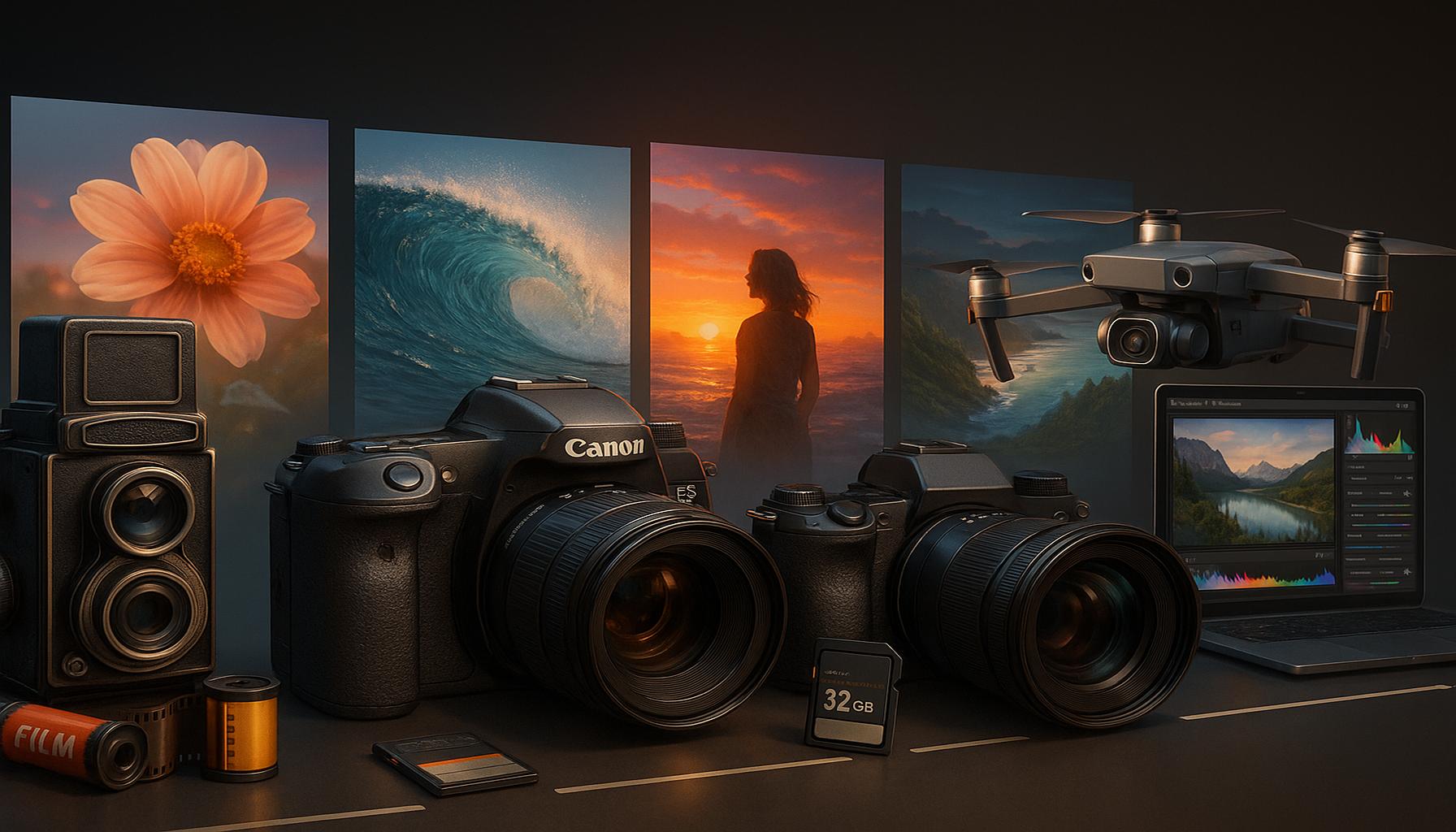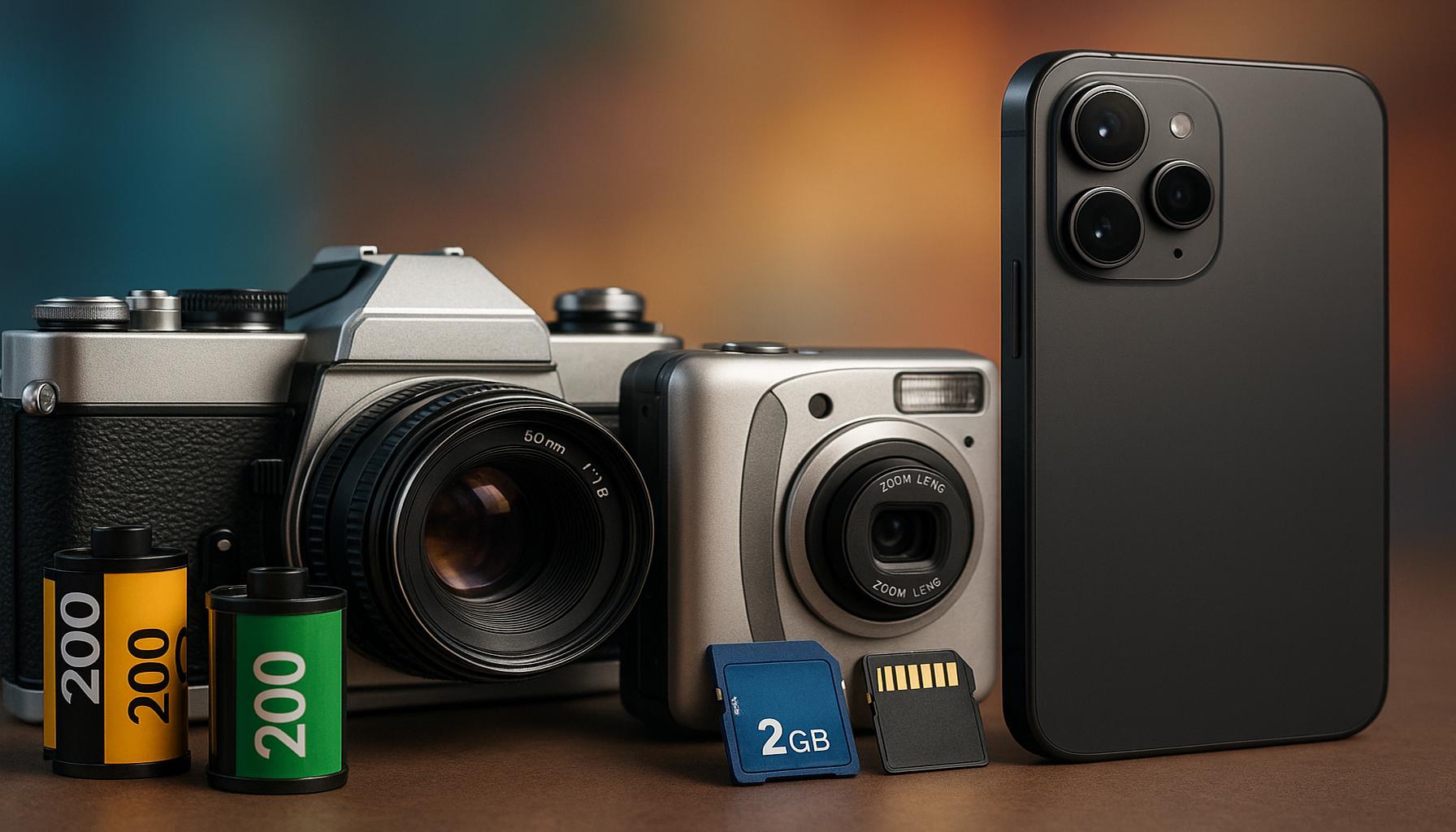The Influence of Social Networks on Modern Photography: Creating and Sharing Visual Art
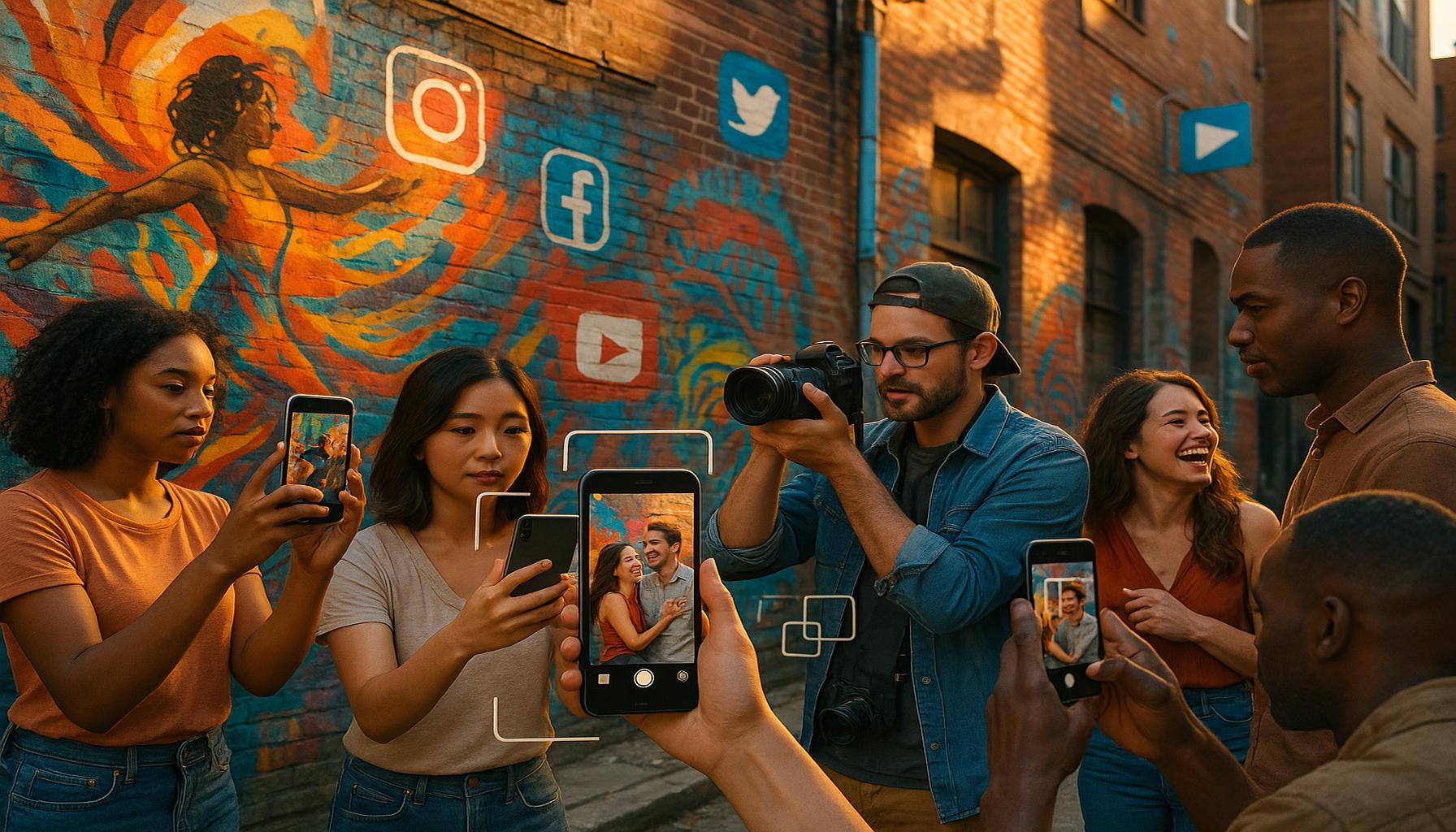
The Digital Canvas of Photography
In an era dominated by digital media, the influence of social networks on photography has reached remarkable heights. Platforms such as Instagram, Snapchat, and Pinterest are no longer merely social channels but have evolved into powerful galleries where both seasoned professionals and enthusiastic amateurs can showcase their art. This transformation has led to a thriving, ever-evolving culture of visual storytelling that transcends traditional barriers.
One of the most significant advantages of social networks is the concept of instant feedback. Photographers can post their images and immediately engage with audiences who share their opinions through likes, comments, and shares. This real-time interaction fosters a dynamic environment where artists can quickly adapt their styles and techniques. For instance, a photographer might upload a portrait and receive constructive criticism about lighting, composition, or even subject expression, enabling rapid skill enhancement. The ability to garner immediate responses can also inspire photographers to push creative boundaries, trying new styles or themes that emerge from audience interest.
Moreover, the global reach offered by these platforms allows photographers to connect with diverse audiences across continents. A landscape photographer from Kansas can share their work with enthusiasts in Japan, while a street photographer in New York City can engage with audiences in Brazil. Such connections are not only beneficial for visibility but they also create opportunities for collaboration, exchange of ideas, and networking. The diverse perspectives encountered through this global engagement can profoundly influence an artist’s work, resulting in a rich tapestry of influences that may not have been possible in a pre-digital age.
Social media has also become a breeding ground for trends and challenges, significantly impacting photography styles and techniques. Viral trends can emerge overnight, inspiring photographers to adopt new themes or visual aesthetics. Challenges, such as the #30DayPhotoChallenge on Instagram, prompt participants to explore different aspects of photography, from self-portraits to nature shots. This collective participation not only fosters creativity but cultivates a sense of community as photographers encourage and inspire one another.
The accessibility of advanced tools and platforms has further democratized visual art. With high-quality smartphone cameras becoming ubiquitous, even amateur photographers can capture stunning images that rival those taken by professionals. Applications that allow for easy editing and sharing have empowered everyday users to become creators in their own right, solidifying the evolving relationship between creator and audience.
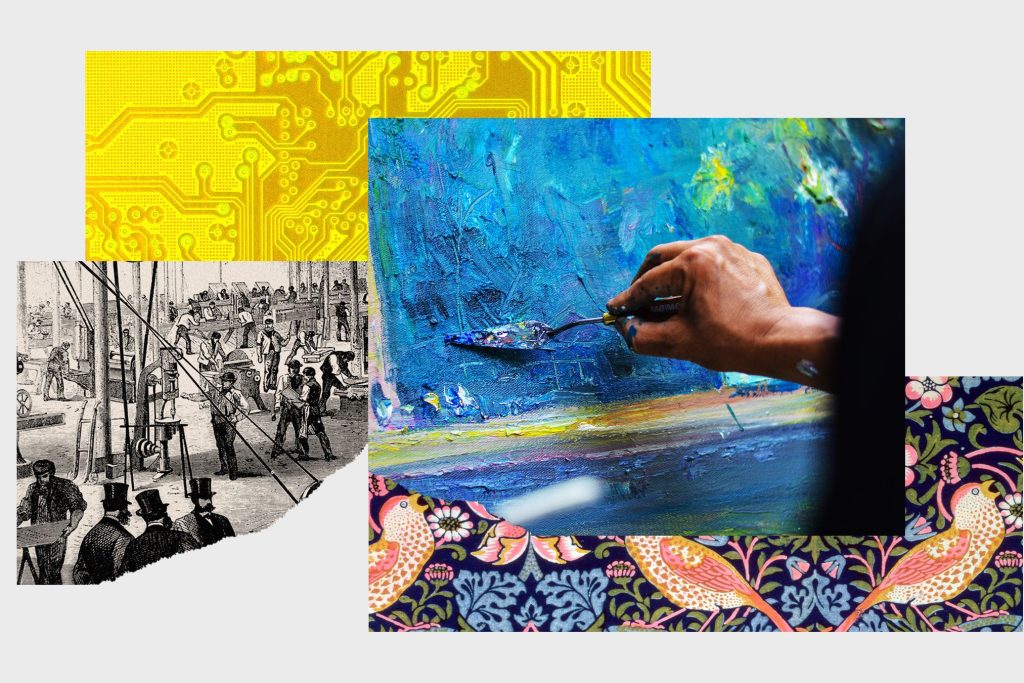
The ripple effects of these changes extend to the photography industry as a whole. As visual content becomes indispensable for personal branding and marketing, understanding how to leverage social networks can significantly enhance a photographer’s career. Emerging talent can garner attention from brands and clients, turning passion into profession through strategic online engagement.
In the subsequent sections, we will delve deeper into the various ways social networks have revolutionized photography—exploring trends, technological advancements, and the implications for both artists and audiences. This exploration will illuminate how social networks continue to shape artistic expression and community interaction in impactful ways.
DIVE DEEPER: Click here to discover the power of collaboration
The Emergence of a New Creative Community
The democratization of photography through social networks has fostered a new era where art is not just created but collaboratively shaped and shared. This burgeoning community is driven by the proliferation of platforms that cater specifically to visual content, providing tools for both dissemination and engagement. Unlike traditional galleries, which often impose restrictions on access and participation, social media platforms invite a mosaic of voices to contribute their perspectives and creativity.
A crucial aspect of this new community is the concept of collaboration. Photographers can now work with artists from different disciplines, including graphic design, videography, and even literature, to create multidisciplinary works of art. For instance, a photojournalist may partner with a poet to convey powerful narratives through combined imagery and verse. Such collaborations can amplify reach and enhance storytelling in profound ways, as artists pull from diverse backgrounds and experiences. Moreover, the viral potential of collaborative projects can lead to a broader audience, keeping the conversation around visual art vibrant and dynamic.
Additionally, the rise of hashtags and themed collections allows photographers to dive into specific genres or movements, facilitating community organization. This trend can be seen in various movements, such as the resurgence of film photography and the vintage aesthetic that has captivated New England communities, or the fascination with urban exploration photography capturing the hidden gems of American cities. By leveraging trending hashtags, photographers can ensure their work reaches those most likely to appreciate their art, maintaining relevance in an ever-competitive landscape.
One notable development is the emergence of micro-communities, where niche genres flourish as enthusiasts form tight-knit groups. For example, communities dedicated to specific subjects, such as wildlife photography enthusiasts or urban street art supporters, allow members to share insights, showcase their work, and access feedback tailored to their unique interests. These micro-communities give voice to specialized photographers who may have previously felt sidelined in the broader art conversation.
The imbued sense of belonging within these networks plays a pivotal role in encouraging growth and exploration among photographers. Access to a community of peers engaged in similar practices creates a pressure-cooker of inspiration. Photographers are more likely to step outside their comfort zones, try new techniques, and embrace authentic storytelling methods. As artists witness the diverse paths taken by their contemporaries, they are often motivated to redefine their own work, pushing the boundaries of their creativity.
As we explore further, we will examine how these digital interactions not only shape individual artistic endeavors but also transform the very essence of visual storytelling in the modern age. We will dive into the implications of accessibility, the balance between art and commerce, and the evolution of audience engagement with visual media.
One of the most significant shifts in the photography landscape has been the democratization of visual art through social networks. Platforms like Instagram, Pinterest, and Snapchat have not only altered the way photographs are taken but also how they are shared and perceived. Today, anyone with a smartphone can capture an image, edit it with accessible apps, and share their visual narrative with a global audience. This accessibility has led to an explosion of creativity and innovation, where diverse voices can emerge and gain recognition without the need for traditional gatekeepers like galleries or publishers.The trend of photographic hashtags has further transformed how art is discovered. Photographers can utilize specific tags to reach target audiences, greatly increasing their exposure. This system has empowered aspiring artists to build personal brands quickly and cultivate dedicated followings. Social networks are not merely platforms for sharing images; they are interactive communities that encourage collaboration. Users can participate in challenges, for example, “30 Days of Photography,” to push their skills and connect with peers around the globe.Moreover, the rise of influencers has shifted how photography is commercialized. Brands utilize influencers to create authentic content that resonates with their target demographics. This partnership not only offers photographers financial opportunities but also serves as a catalyst for creative projects. Collaborations between photographers, brands, and other artists can result in innovative work that might not have been possible in a traditional framework.The influence of social networks on photography has also led to a greater dialogue about issues like authenticity, consumer culture, and the ethics of representation. Questions regarding ‘likes’ and validation have sparked conversations about what it means to be an artist in a world heavily influenced by social metrics. As debates about authenticity and art continue to unfold, photographers must navigate these complexities to find their place in this evolving visual landscape.In this era, the balance between artistry and personal branding poses unique challenges. However, it also presents abundant opportunities for creativity and collaboration. As social media continues to shape modern photography, artists must adapt and leverage these tools to enhance their work and make meaningful connections within the digital realm.
DISCOVER MORE: Click here to dive deeper
The Transformation of Visual Storytelling
The phenomenon of social networks has not only changed how photographers share their work, but it has also fundamentally transformed visual storytelling itself. Today, storytelling in photography transcends mere image capturing; it evolves into a narrative delivered through curated collections, digital albums, and interactive multimedia experiences that engage audiences on various levels. Social media platforms have allowed photographers to achieve a level of narrative complexity that was once confined to the realms of journalism and cinema.
One of the most significant developments in this realm is the notion of the photo essay. This format allows photographers to tell complete stories through a series of images, often supplemented with captions or short texts. Academic studies reveal that audiences connect more deeply with a series that encapsulates an entire story compared to a single shot. Platforms like Instagram and Facebook provide a space for these dynamic photo essays, allowing photographers to keep viewers engaged as they swipe through their visual narratives, exploring different facets of a theme or an event.
Additionally, the accessibility of mobile photography tools has democratized the art of storytelling through images. A growing number of photographers utilize smartphone cameras to capture spontaneous moments that feel more intimate and authentic. This shift challenges the notion that high-quality photography must come from professional-grade equipment, enabling budding artists to create compelling narratives from their everyday experiences. The popularity of features like Instagram Stories exemplifies how quick, candid snaps can capture the day-to-day realities of people’s lives, thus enriching the visual narrative with an element of vulnerability.
The integration of video content into photography has further revolutionized storytelling. Platforms such as TikTok highlight this trend, as photographers accompany their images with short video clips, offering behind-the-scenes glimpses of their creative process or sharing personal anecdotes related to the photographs. By layering multiple types of media, photographers enhance engagement with followers, converting passive viewers into active participants in the narrative journey.
The participation of audiences in the creative process has also seen a significant transformation. With the ability to leave comments, likes, and shares, viewers aren’t just passive consumers of art; they become part of the artistic dialogue. Artists often receive immediate feedback on their work, allowing them to iterate and refine their artistic vision in real-time. This unique interaction between artist and audience can lead to the development of collaborative projects, where photographers may invite their followers to contribute ideas, themes, or even images to a shared gallery, fostering a spirit of community and experimentation.
As social networks continue to evolve, the role of algorithms cannot be overlooked. These digital gatekeepers determine which images gain traction, influencing trends and themes in modern photography. The algorithms often favor images that accumulate likes and comments quickly, which means photographers are incentivized to create visually striking and engaging content. This push for aesthetic appeal has led some to question whether art is being compromised for the sake of engagement, but it has equally encouraged creativity and innovation to capture attention in a flooded market.
In summary, the influence of social networks encompasses much more than just sharing photographs. It delves into the very essence of how stories are constructed, shared, and reinterpreted in a collective arena. Photography has evolved into a multifaceted narrative medium, where interaction and collaboration reign supreme, thus reshaping our understanding of visual artistry in the modern landscape.
Dive Deeper: Click here to explore watercolor techniques
Conclusion
In conclusion, the impact of social networks on modern photography is profound and far-reaching, redefining not only how photographers create and share their work but also how visual art is experienced by audiences. Social media has transformed photography into an engaging narrative form that resonates on multiple levels, enabling photographers to foster deeper connections with viewers through dynamic storytelling and collaborative projects.
As we navigate this visually saturated landscape, the democratization of photography, fueled by accessible mobile technologies, encourages diverse voices and perspectives to emerge. This evolution reflects a shift in artistic ownership, where the boundaries between artist and audience blur, inviting everyone to participate in the creative process. Coupled with innovative formats like photo essays and integrated video content, the opportunities for storytelling are more abundant than ever before.
However, the effect of algorithms—standardized systems that prioritize content visibility—poses significant questions regarding artistic integrity and the potential dilution of creativity. While the drive for engagement can inspire visually compelling work, it also challenges photographers to balance their artistic vision with trends dictated by social platforms. Navigating this fine line is essential for burgeoning visual artists aiming to carve out their unique niche amidst the noise.
The future of photography is undoubtedly intertwined with social networks, setting the stage for a continued evolution of visual storytelling. As technology advances and audiences become increasingly interactive, the fusion of creativity and community will further redefine what it means to create and share art in this digital era. Ultimately, understanding these dynamics will empower photographers to harness these platforms in ways that honor their artistic voice while engaging meaningfully with their audience.

